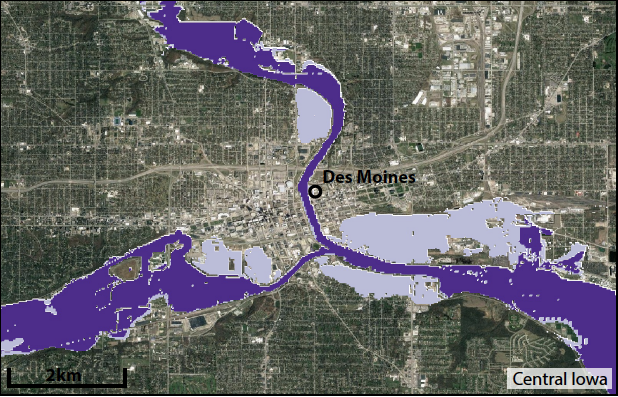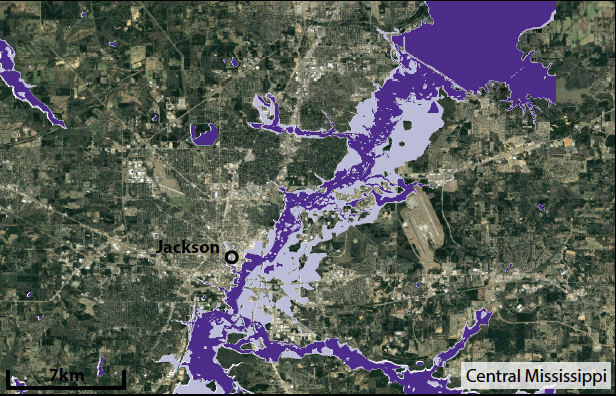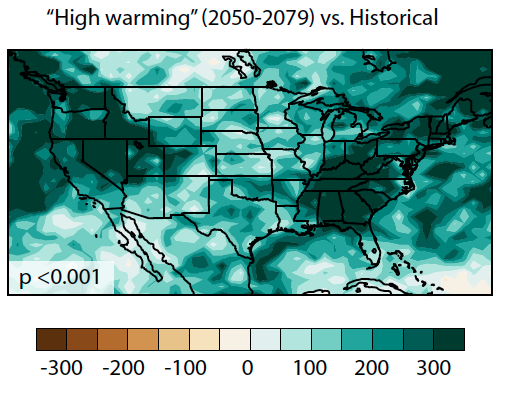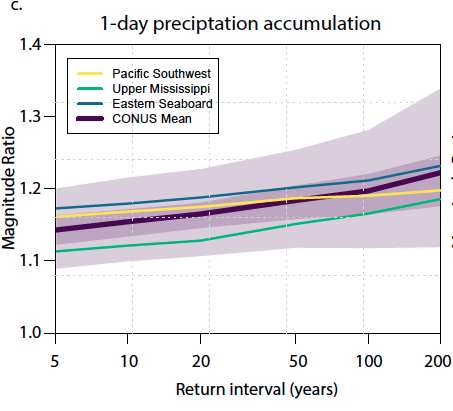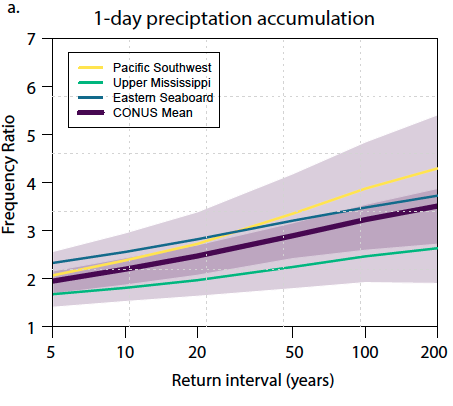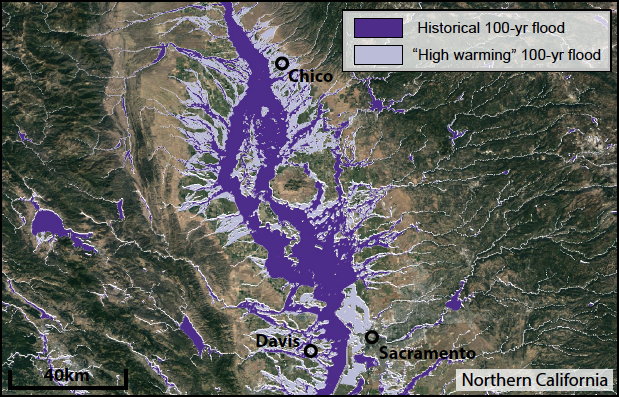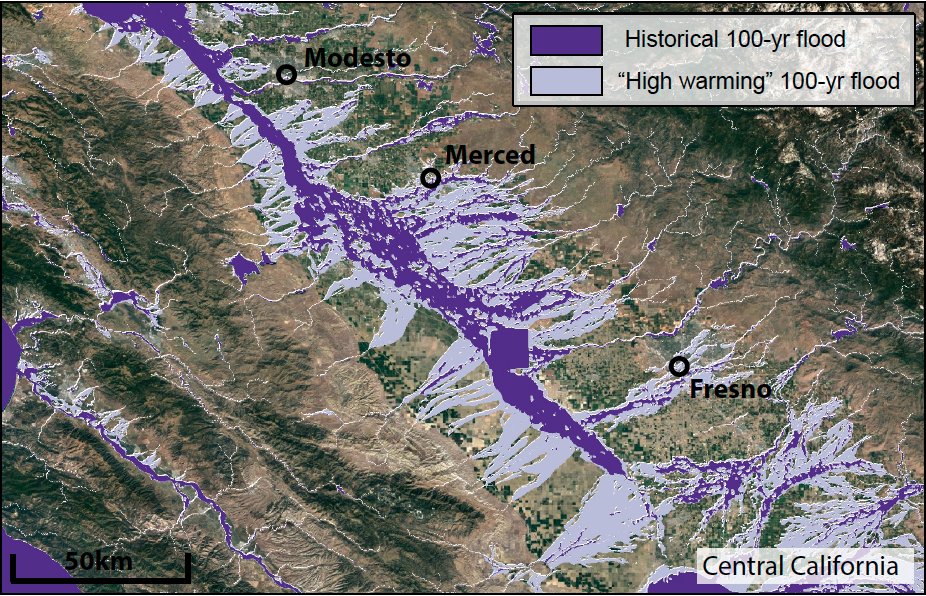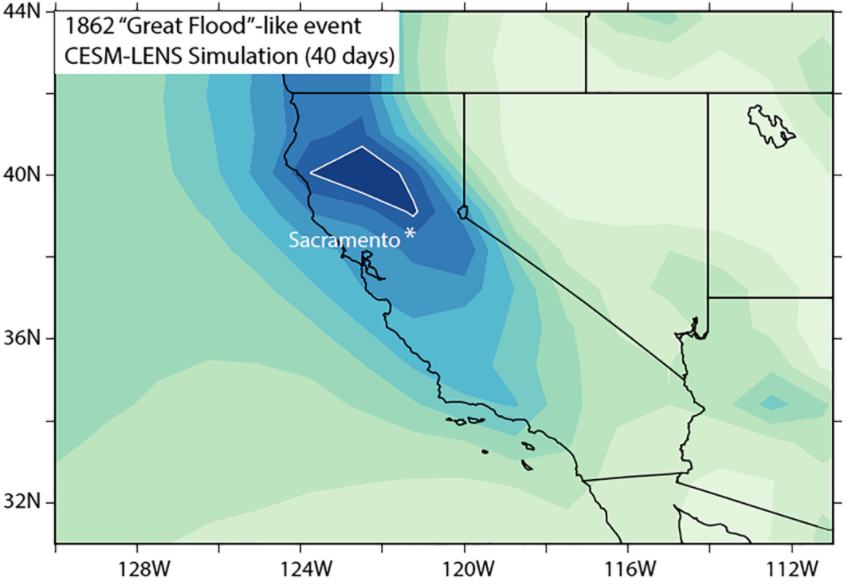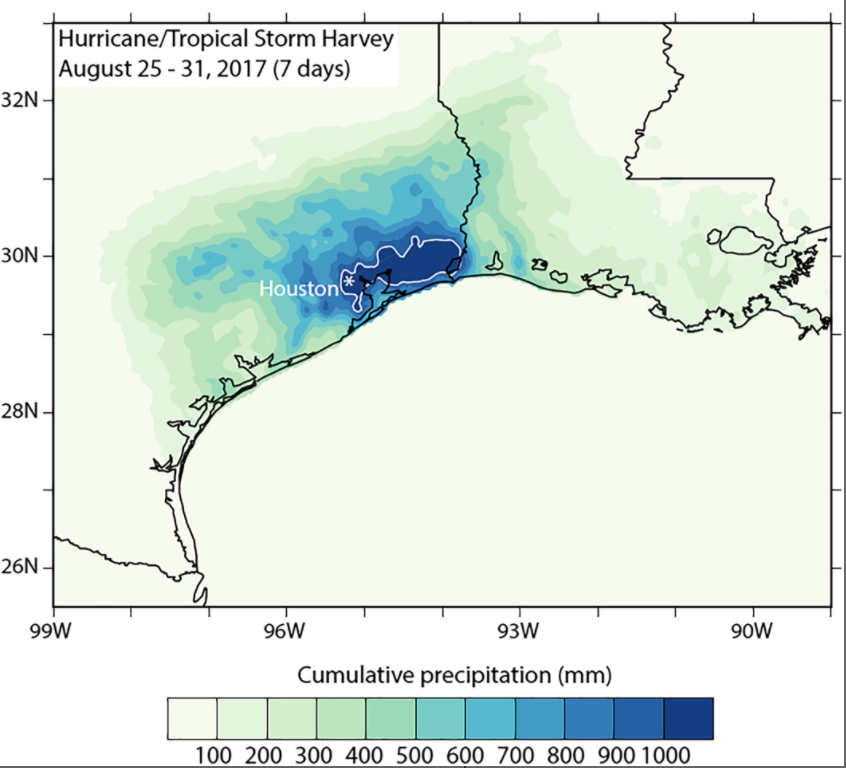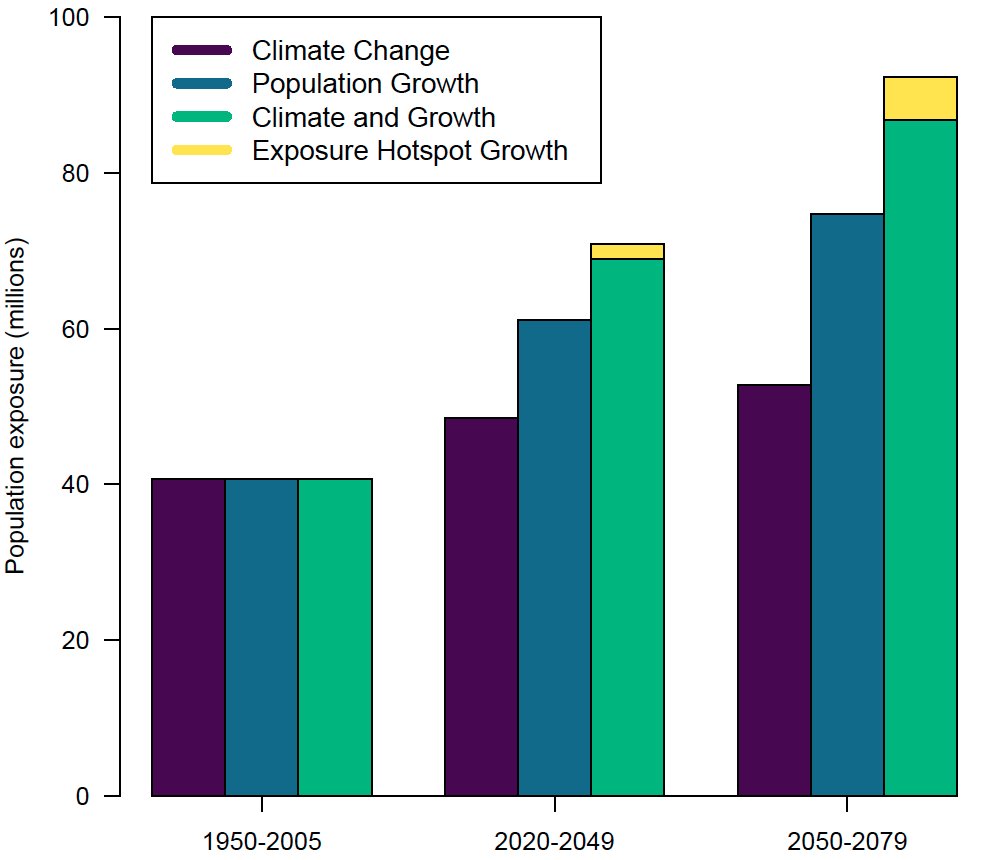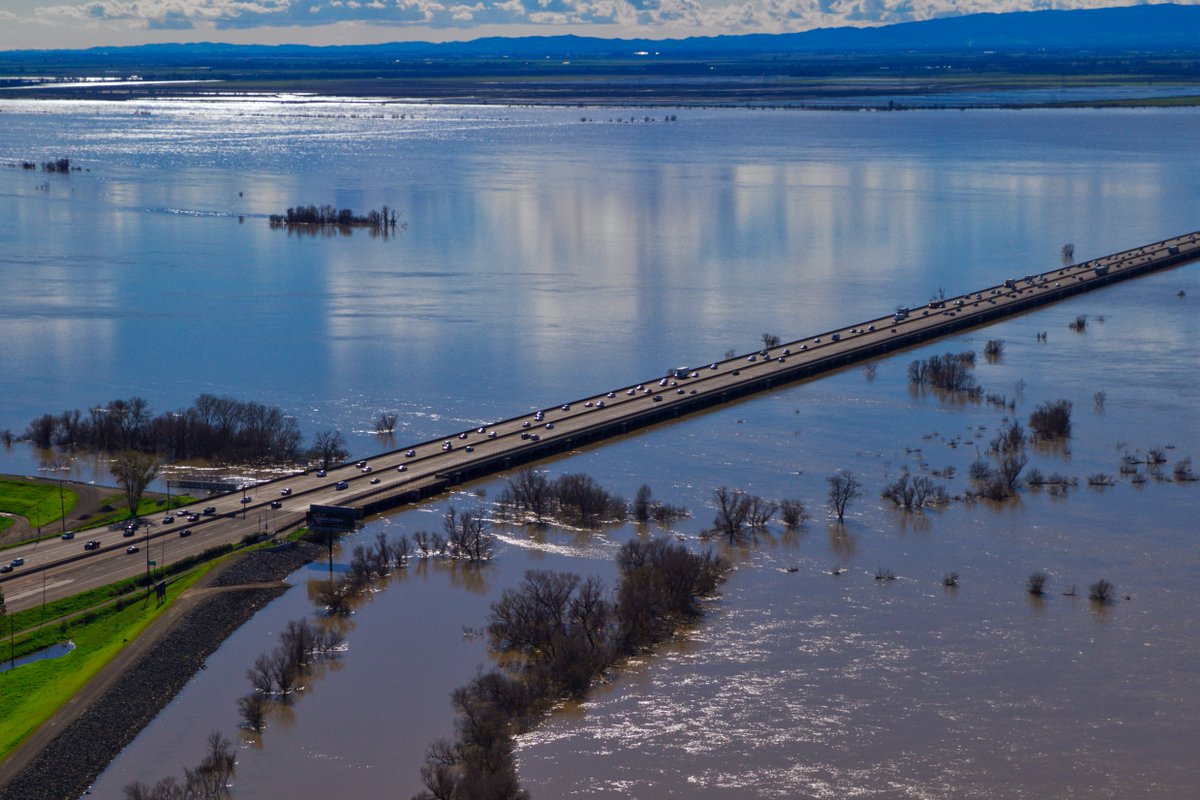In new work, we investigate changes in potential flood risk due to #ClimateChange-caused increases in extreme precipitation. We find that near-term warming will bring about a large increase in population exposed to flood in continental U.S. (Thread: 1/13) https://agupubs.onlinelibrary.wiley.com/doi/10.1029/2020EF001778
We combine simulations from a climate model large ensemble (CESM-LENS) and a high-resolution hydrodynamic model ( @fathom_global) to estimate how projected increases in extreme precipitation will affect the extent and depth of flood inundation. (2/13)
https://agupubs.onlinelibrary.wiley.com/doi/10.1029/2020EF001778
https://agupubs.onlinelibrary.wiley.com/doi/10.1029/2020EF001778
Our use of the large ensemble allows us to consider extremely rare, high-magnitude flood/precip events directly, without making statistical assumptions--including so-called "100-200 year floods" that have little or no precedent in historical record.(3/13)
https://agupubs.onlinelibrary.wiley.com/doi/10.1029/2020EF001778
https://agupubs.onlinelibrary.wiley.com/doi/10.1029/2020EF001778
That extreme precipitation increases in a warming climate is no surprise, given prior work & theory. But we find that the magnitude of the projected extreme precip increase actually increases non-linearly as a function of event severity! (4/13)
https://agupubs.onlinelibrary.wiley.com/doi/10.1029/2020EF001778
https://agupubs.onlinelibrary.wiley.com/doi/10.1029/2020EF001778
This non‐linear increase for the most intense precipitation events has potentially major implications--as it suggests accelerating societal impacts from historically rare or unprecedented precipitation events in the 21st century. (5/13) #CAwater
https://agupubs.onlinelibrary.wiley.com/doi/10.1029/2020EF001778
https://agupubs.onlinelibrary.wiley.com/doi/10.1029/2020EF001778
Recent experience & research suggests that so-called "megaflood" events are less rare than has commonly been assumed--think California's "Great Flood of 1862" or Houston's experience during Hurricane Harvey in 2017--but #ClimateChange compounds risk.(6/13)
https://agupubs.onlinelibrary.wiley.com/doi/full/10.1029/2019EF001242
https://agupubs.onlinelibrary.wiley.com/doi/full/10.1029/2019EF001242
We consider multiple scenarios of both climate & U.S. population growth in coming years. Increasing extreme precip increases exposure in all scenarios, but pop expansion into risk zones greatly amplifies effect (aka the “Expanding Bullseye Effect”).(7/13)
https://agupubs.onlinelibrary.wiley.com/doi/10.1029/2020EF001778
https://agupubs.onlinelibrary.wiley.com/doi/10.1029/2020EF001778
Strikingly, flood risk is larger than simple sum of contributions from climate & pop growth! We find "exposure hotspots"--unpopulated areas outside of historical floodplains that are subsequently populated & within expanded future flood footprints. (8/13)
https://agupubs.onlinelibrary.wiley.com/doi/10.1029/2020EF001778
https://agupubs.onlinelibrary.wiley.com/doi/10.1029/2020EF001778
These projected "exposure hotspot" regions make attractive targets for land use and zoning policies--as well as floodplain rehabilitation activities--aimed at reducing or stabilizing population-level flood risks in a warming climate. (9/13)
https://agupubs.onlinelibrary.wiley.com/doi/10.1029/2020EF001778
https://agupubs.onlinelibrary.wiley.com/doi/10.1029/2020EF001778
It's worth noting that our "medium warming" scenario is quite relevant to near-term planning: it considers time period 2020-2049 on a carbon emissions trajectory similar to the one we're currently on. These are changes that are largely unavoidable.(10/13) https://agupubs.onlinelibrary.wiley.com/doi/10.1029/2020EF001778
Finally, we emphasize that these are intended as approximate, first-order estimates of climate-driven flood risk. We deliberately exclude key factors, such as changing soil moisture & snow cover, that strongly modulate flood response to precip. (11/13) https://agupubs.onlinelibrary.wiley.com/doi/10.1029/2020GL088000
For a more nuanced perspective on the importance of these modulating land surface factors in a warming climate, see forthcoming work led @ManuelaIBrunner. Hopefully this new research will become available sometime during the first half of 2021! (12/13) https://agupubs.onlinelibrary.wiley.com/doi/10.1029/2020GL088000
Finally: this open access publication in @EarthsFutureEiC was a collaborative effort with folks from @UCLAIoES, @BristolUni, @nature_org, & @C3WE_NCAR--including @oejwing, @KrisAJohnson, & @Climate_Done. Many thanks to all involved! (13/13) https://agupubs.onlinelibrary.wiley.com/doi/10.1029/2020EF001778

 Read on Twitter
Read on Twitter